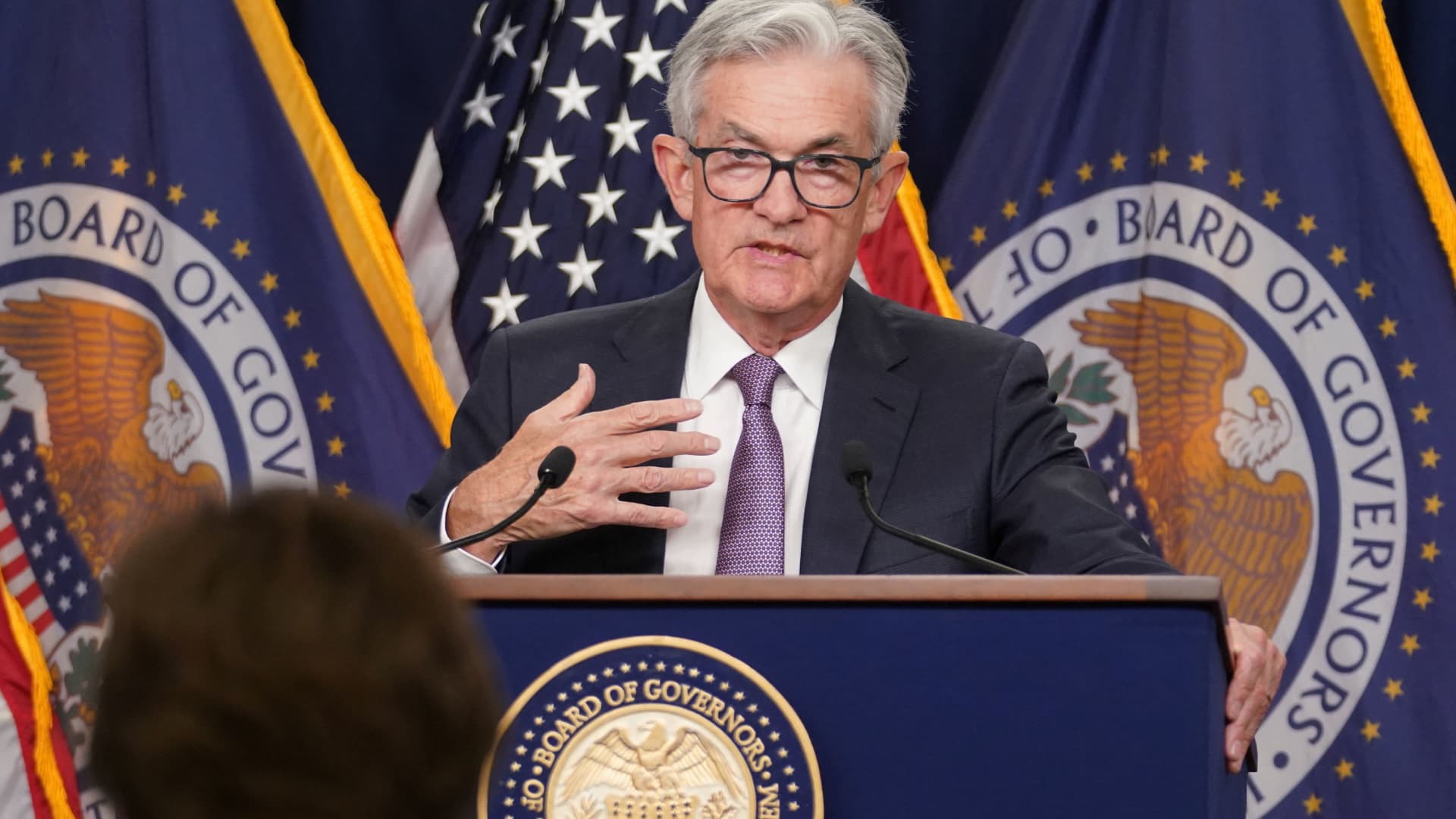Just in case there was any lingering doubt, the bond market is now pricing in a near-certainty of a recession, induced by the Federal Reserve, that already is here or on the way shortly. The three-month Treasury yield now sits some 86 basis points ahead of the 10-year , a level not seen since at least the early 1980s. Such “inversions” have presaged every recession during that period. In fact, the last time the disparity was this steep came when then-Fed Chairman Paul Volcker induced a recession to end the runaway inflation of the 1970s and early 1980s. Now, some investors fear current Chairman Jerome Powell is doing the same. “The last time we were here was at the start of the ‘Volcker recession,’ and his Fed was already cutting rates,” DataTrek Research co-founder Nicholas Colas said in a his daily note to clients Tuesday evening. “Now we have a Fed that is still talking about ‘higher for longer’ rates, the opposite of 1981’s trajectory. Markets are essentially saying there will be another man-made economic contraction soon: the ‘Powell recession.'” Those fears have manifested themselves in a selloff this week for a market that rallied strongly last week after comments from Powell were interpreted as dovish. That rally was the latest in a series of miscommunications between the markets and Powell, who has been steadfast that the Fed won’t back off policy tightening until there are clearer signs that inflation is receding. The three-month/10-year Treasury relationship is closely followed in the markets for its predictive power, primarily because the former is seen as reflective of short-term Fed policy while the latter is tied to longer-term growth expectations and what markets consider a “neutral” rate level that is neither restrictive nor stimulative. The New York Fed even has a tracker on its site that gauges the possibility of a recession by the three-month/10-year curve. As of the end of November, the inversion level implied a 38% recession chance within 12 months, according to the central bank’s methodology. But as Colas points out, a 38% chance is as good as 100% by historical trends: Every time the New York Fed indicator has topped a 30% probability, a recession has followed. (Recessions are shaded areas.) Source: Federal Reserve Bank of New York, The Yield Curve as a Leading Indicator The Fed model “is clearly saying high short term interest rates are going to cause a recession in the next 12 months,” Colas wrote. “Moreover, these odds are very likely to increase.” That’s at least in part because the Fed plans to keep raising interest rates . Central bank officials have indicated, and markets widely anticipate, another 0.5 percentage point hike when the rate-setting Federal Open Market Committee meets Dec. 13-14. That would take the Fed’s benchmark borrowing rate to a range of 4.25%-4.5%., the highest in 15 years. Markets also anticipate the Fed to approve a few more increases, ultimately taking the bottom end of the range to about 5%. If current dynamics persist, that likely would invert the curve further as short-term rates rise and growth expectations diminish, exacerbating the probability for a recession. To be sure, some key recent economic data points are not flashing recession. Nonfarm payrolls increased by 263,000 in December, ahead of Wall Street expectations. November ISM readings for manufacturing and services showed continued expansion, and even some inflation indicators, such as unit labor costs, have pared back. But economists expect that higher rates will pressure consumers into spending less. Some high-profile layoff announcements as of late also have spurred concern that companies are preparing for a contraction next year. Most Wall Street firms are expecting a recession, though Goldman Sachs has said it still sees a path to a “soft landing” in which the Fed can engineer a pullback in inflation without tanking the economy. Capital Economics projects the economy will slip into “a mild recession” next year, with unemployment hitting around 5% from its current 3.7% level. “Although recent data have been a bit stronger than we had expected, most forward-looking indicators have continued to deteriorate, with our composite tracking models putting the odds of the economy being in recession in six months’ time at close to 90%,” Andrew Hunter, Capital Economics’ senior U.S. economist, said in a note Wednesday. Similarly, Wells Fargo economists noted that “Our own yield curve forecast signals turbulent times are ahead, aligning with our expectation for a recession starting next year.” In addition to deciding on rates, FOMC members will update their outlook on the funds rate, gross domestic product, inflation and unemployment. Morgan Stanley expects committee members to raise their outlook for the end-point for the funds rate but to indicate a “long on-hold period.” The firm also thinks the Fed will lower its unofficial forecast for inflation and GDP while changing language in the post-meeting statement to say it foresees “some further increase” in rates ahead, which would give the committee wiggle room on how many hikes are ahead.

